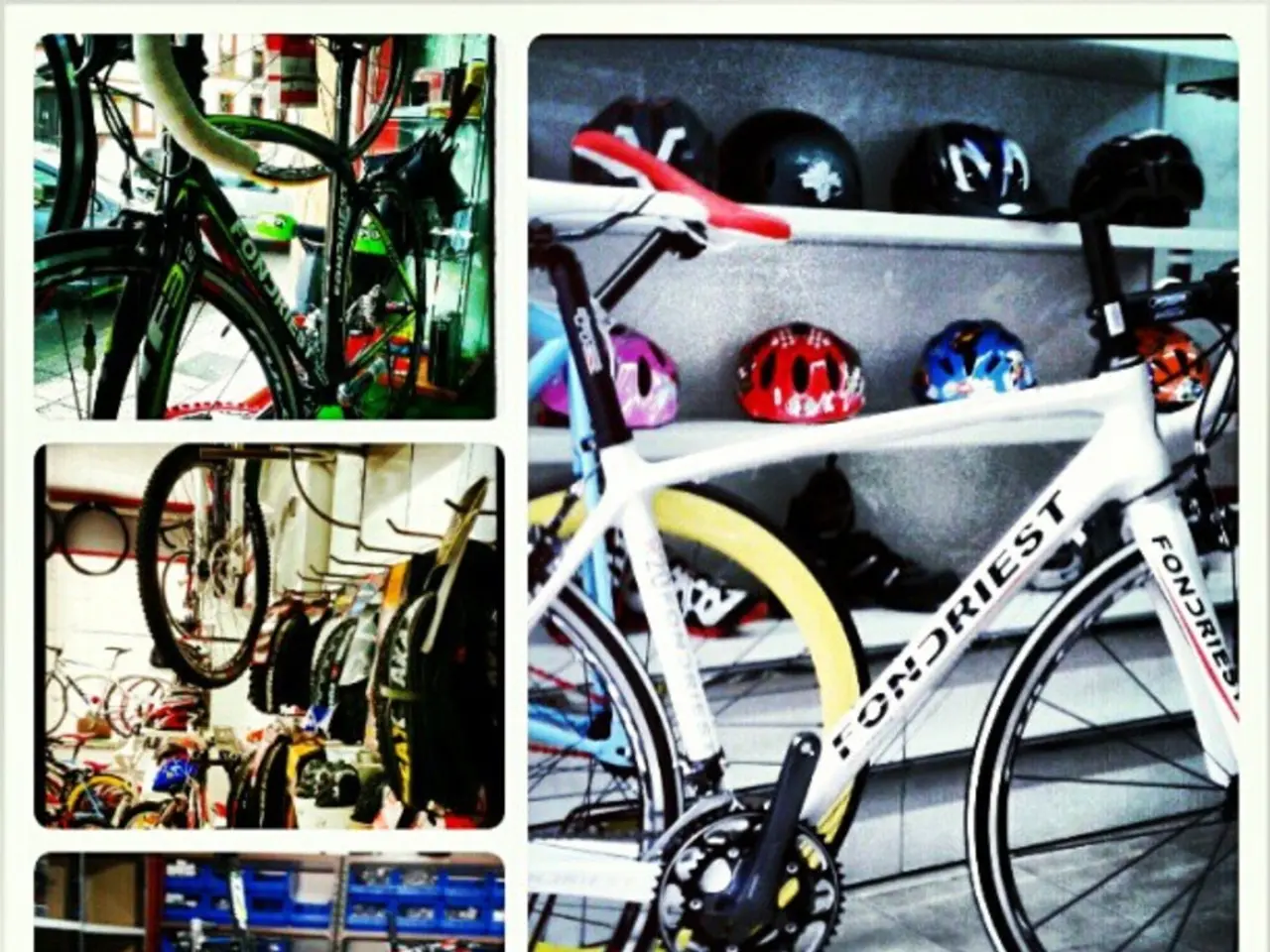Inflatable helmets: An innovative approach to enhancing safety for cyclists, according to a forward-thinking inventor.
The Ventete aH-1, a British-designed and Swiss-made inflatable helmet, has shown promising results in laboratory testing for brain injury mitigation, particularly in reducing linear impact forces.
The helmet was tested against three conventional helmets, with the aH-1 demonstrating a 44.1% reduction in linear risk compared to the best-performing EPS helmet. In terms of rotational impact, the aH-1 performed second best, behind a helmet featuring a secondary inner layer for reduced rotational motion.
The testing, conducted by brain-injury specialists at the HEAD Lab at Imperial College London, focused on real-world cycling accidents by dropping each helmet on a dummy head attached to a rig and onto a U-shaped testing platform at 6.5m/s (13mph) and a 45° angle.
The aH-1's unique design consists of 11 inflatable chambers, each encased in a protective rib and built from laminated nylon, which is puncture, abrasion, and stretch resistant. This air-filled structure effectively reduces linear acceleration forces, which are strongly associated with brain contusions and focal injuries.
While the performance of the aH-1 in rotational forces, contributing to diffuse brain injuries such as concussions, is on par with traditional helmets, the extended impact time due to inflation results in a significant drop in linear risk.
Additional features of the aH-1 include its foldable form factor for convenience and a mid-range price point of £350, making it practical for urban cyclists. However, no extensive data on its long-term durability or performance in real-world crash conditions beyond the initial oblique impact tests have been reported yet.
The European helmet safety standard, EN 1078, covers a helmet's construction, field of vision, and shock-absorbing properties, and the aH-1 is EN 1078 certified, indicating it meets these safety standards for bicycle helmets.
It's important to note that while the aH-1 shows significant improvements in linear impact protection, the number of cycling deaths each year, estimated at approximately 41,000 by the World Health Organization, is unknown how many were not wearing a helmet.
Cycling UK suggests that making helmet use mandatory could lead to a drop in the number of people choosing to go by bike, as reported after New South Wales and Melbourne introduced mandatory helmet laws, which saw cycling drop by 36% in those areas.
The Ventete aH-1 inflatable helmet, with its innovative design and enhanced protection against linear brain injury, represents a promising advancement in helmet safety technology. As more data becomes available, cyclists may find this new option a compelling choice for their safety on the roads.
[1] Source: Study on the Ventete aH-1 helmet [2] Source: Cycling UK report on mandatory helmet laws [3] Source: Ventete aH-1 product information [4] Source: World Health Organization report on cycling deaths
- The innovative use of technology in the Ventete aH-1 inflatable helmet, particularly in the form of its 11 inflatable chambers, is revolutionizing the field of neuroscience by offering enhanced protection against linear brain injury.
- In the realm of energy consumption, the aH-1's unique design may have implications for the future, as it challenges traditional helmet designs with its air-filled structure that reduces linear acceleration forces.
- Beyond brain injuries, the potential applications of this technology in the field of science could extend to other areas, such as space exploration, where the mitigation of impact forces is crucial for astronaut safety.
- With the increasing focus on health and safety in our society, the adoption of advanced technology like the Ventete aH-1 could reshape the landscape of transportation, potentially reducing the number of accidents and deaths on our roads in the years ahead.




